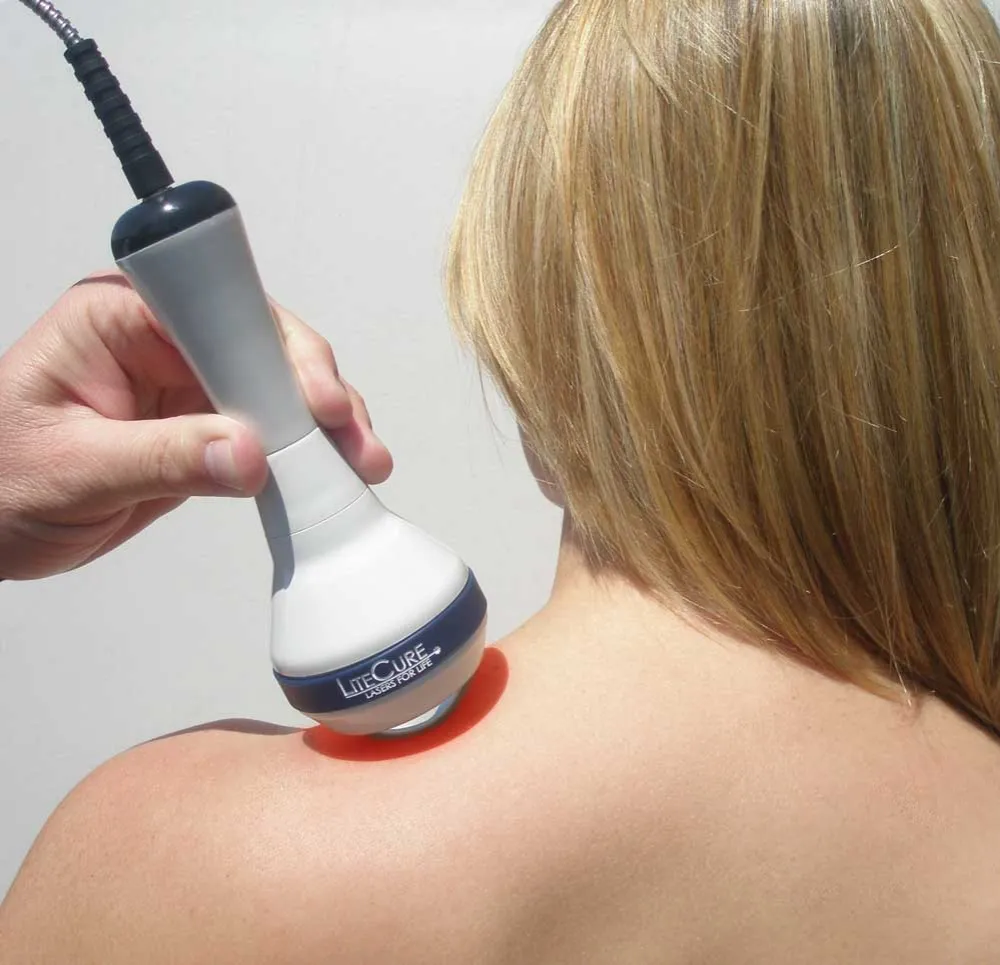Low Level Laser Therapy
Laser therapy and its healing effect was initially explored by NASA researchers who had developed laser to grow plants in space. After further study they noted that the light therapy..
“Produced improvement of greater than 40% in Musculoskeletal training injuries in Navy Seal team members and decreased wound healing time in crew aboard a US Naval submarine”
They also found that laser therapy produced a 47% reduction in the pain of children suffering from oral mucositis, a side effect of chemotherapy. As a result of this laser therapy is now used routinely in the care of children in the UK and in the Paediatric Hospital in Glasgow.
Over recent years more than 400 double blind, placebo-controlled trials and 4000 laboratory studies of Low Level Laser Therapy (LLLT) have been published. Since 2001 LLLT has been approved by the US Food and Drug Administration. Medics in the US are using laser therapy more often than ever before to help reduce pain and inflammation related to many common conditions.
How Does It Work?
Laser therapy uses a process called Photobiomodulation (PBM). Photons (light) enter the damaged tissue and interact with the cytochrome c complex within mitochondria (the energy producers of the cells), the mitochondria contain molecules that act as light receptors, like plants. Receiving this light provides a shot of energy to the system. This interaction triggers a biological cascade of events that leads to an increase in cellular metabolism. Ultimately these changes appear to have the capacity to induce long-lasting changes in the immune system, reduce inflammation, increase circulation, cause cells to multiply and stimulate the bodies own repair mechanism, decreasing both pain and inflammation. (12)
What can it treat?
There is lots of evidence available for the effectiveness of laser therapy. Many elite athletes and pro golfers and footballers use it as a part of their ongoing treatment to maintain their high level of training required.
Laser therapy can be used for acute and chronic conditions When treating acute conditions with laser therapy, it is particularly effective when it is administered as soon as possible following injury (assuming there is no active bleeding). The faster the inflammation is reduced, and the healing process can begin, the better. In the case of acute injury, laser therapy helps restore the body to normal function more quickly. With chronic conditions, laser therapy is used most often to help combat persistent pain and inflammation.
There are many studies available that advocate its use for conditions like:
- Plantar Fasciitis (1)
- Carpal Tunnel Syndrome (2)
- Arthritis For Pain Relief (3), (4)
- Frozen Shoulder (5)
- Fibromyalgia & a wide variety of Musculo-Skeletal disorders (6)
- Acute low Back & Neck Pain (7)
- Headache (8)
- Peripheral Somatosensory Neuropathy & Neuropathic Pain ( 9)
- Jaw/ TMJ Pain (10)
- Bell’s palsy (11)
- Wound Healing eg; Post-Surgical, Diabetic Ulcers (13)
Research is continuing in America and is currently looking at rehabilitation from brain injuries like stroke and spinal cord damage.
What should I expect with treatment?
One common question related to laser therapy is, “What does it feel like?” Depending on the laser, it can create little to no sensation or it can create a gentle, soothing warmth. Many patients receiving laser therapy treatments report enjoying the experience, especially when a massage-ball treatment head is used to deliver what is often referred to as a “laser massage.” Patients receiving treatments with higher-power lasers also report a rapid decrease in pain. For someone suffering from chronic pain, this effect can be particularly pronounced. Treatments are quick and usually take 5-10 minutes depending on the size, depth, and acuteness of the condition being treated.
How many treatments will I need?
Treatment amounts vary depending on the area or condition being treated. In our clinic your first appointment will be with one of our Osteopaths to take a full history, properly diagnose the problem to be treated and prescribe the amount and frequency of the laser therapy required. Generally, we recommend a course of four to six treatments over a period of three weeks, each treatment session should last no more than 15 to 20 minutes.
Please give us a call if you would like to discuss a course of laser Therapy with us.
REFERENCES
- 1. JFootAnkleSurg,2015;54;768-72
- 2. Medicine(Baltimore),2016;95;e4424
- 3. CliniRehabil,2018;32;173-8; LasersMedSci;2015;30;2335-9
- 4. LasersSurgMed2016;48;498-504. PhotomedLaserSurg,2015;33;145-53
- 5. PhotomedLaserSurg;2008;26;99-105
- 6. LasersmedSci;201429,335-42
- 7. PhotomedLasrSurg,2010;28,553-60;PainMed;2010;11;1169-78
- 8. Pain,2008;137;405-12;ExpBiolMed(Maywood),2016;241;40-5
- 9. LaserMedSci;2017;32;721-8; JPhotochemPhotobiolB:2016;164;36-42
- 10. Cranio,2014:32:51-6
- 11. LaserMedSci, 2014;29;335-42
- 12. AnnBiomedEng,2012;40;516-33
- 13. LaserSurgMed;200941;433-41






